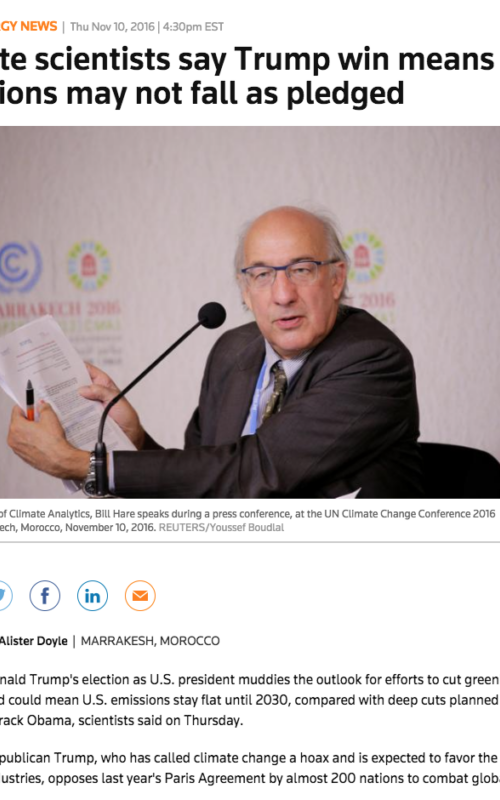Media coverage
Share

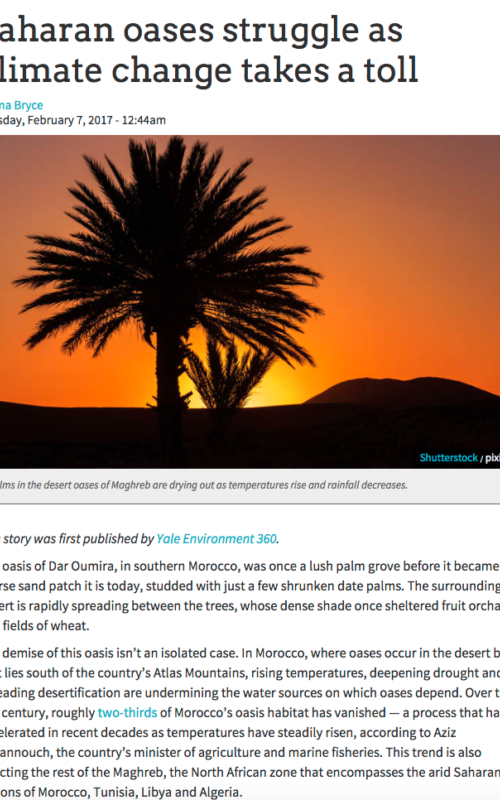
Green Biz
Climate change is bad news for desert oases across Maghreb, the North African zone that encompasses the arid Saharan nations of Morocco, Tunisia, Libya and Algeria. The drying trend is likely to continue, says Climate Analytics' Dr Carl-Friedrich Schleussner.
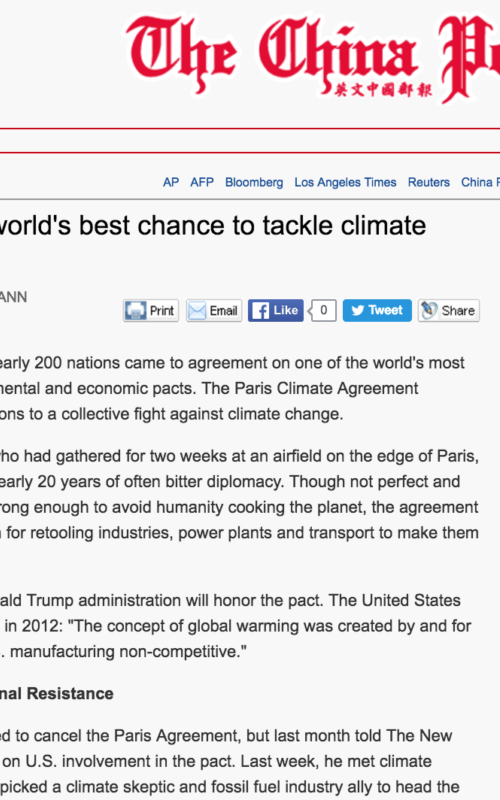
The China Post
"Over the next five to 10 years, if we succeed in bending the present upward curve of emissions and ramp up climate action — meaning that by 2025 emissions are well and truly on a downward trajectory — then we will be able to say the agreement is working," says climate scientist Bill Hare.
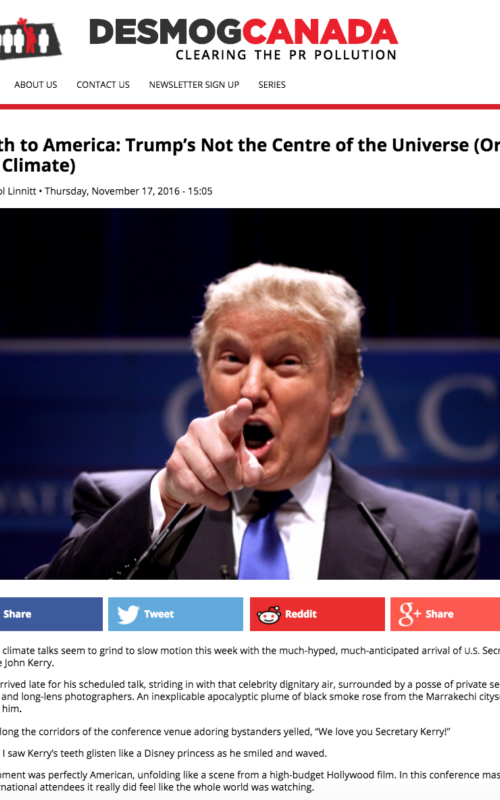
Desmog Canada
“The strongest moral leadership in this process has always come from the vulnerable countries,” he said. “And not just in providing that leadership but in actually committing to do more.” Bill Hare, climate scientist and director of Berlin-based Climate Analytics, said Trump’s surprise victory did dampen the mood in Marrakech — for a day. “People bounced back quickly, thinking ‘well, okay, we can also do tough.’ “
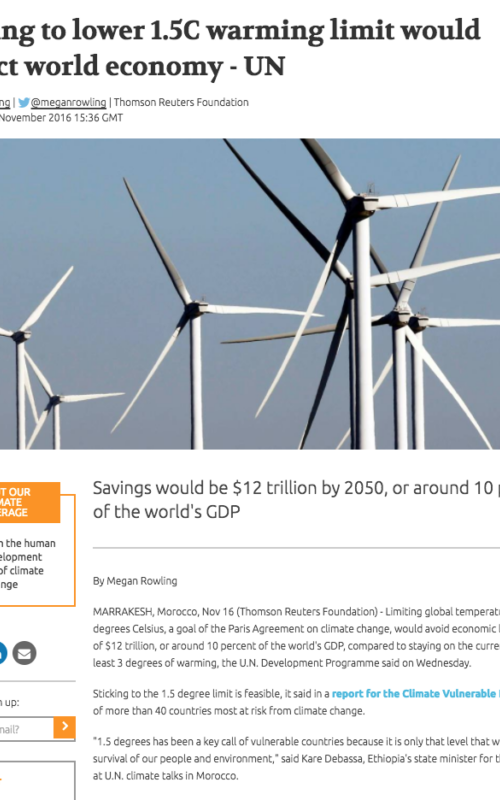
Thomson Reuters Foundation
Limiting global temperature rise to 1.5 degrees Celsius, a goal of the Paris Agreement on climate change, would avoid economic losses by 2050 of $12 trillion, or around 10 percent of the world's GDP, compared to staying on the current track of at least 3 degrees of warming, the U.N. Development Programme said on Wednesday.
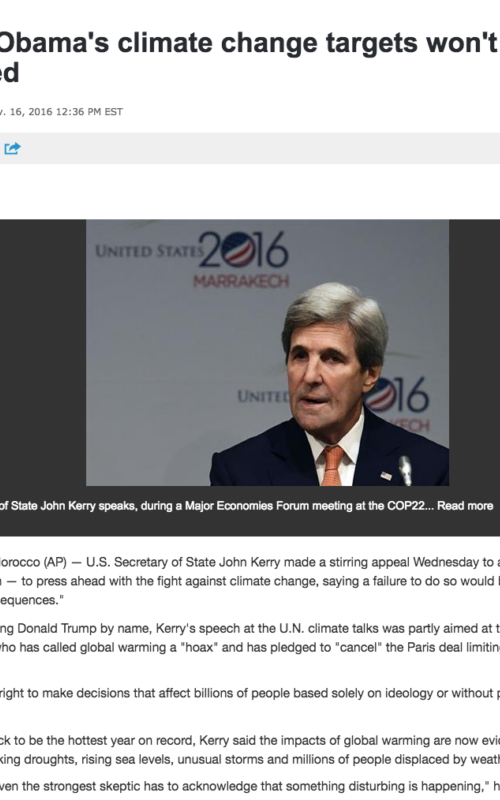
Associated Press
U.S. Secretary of State John Kerry made a stirring appeal Wednesday to all countries — including his own — to press ahead with the fight against climate change, saying a failure to do so would be a "betrayal of devastating consequences." Bill Hare, director of the Climate Analytics said if Trump dismantles Obama policies such as the Climate Action Plan and Clean Power Plan, then U.S. emissions would stay at current levels instead of decrease.
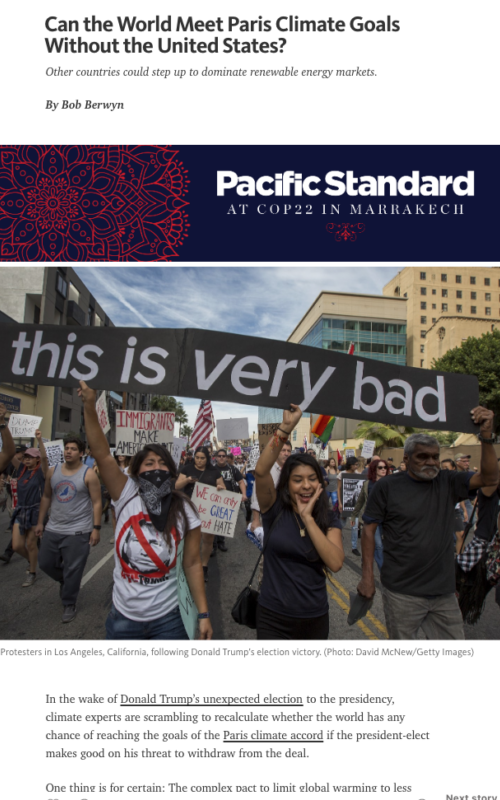
Pacific Standard
In the wake of Donald Trump’s unexpected election to the presidency, climate experts are scrambling to recalculate whether the world has any chance of reaching the goals of the Paris climate accord if the president-elect makes good on his threat to withdraw from the deal.
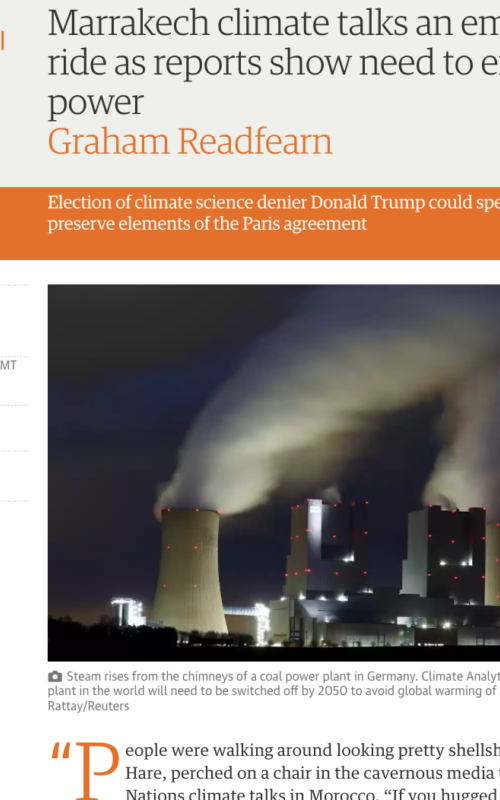
The Guardian
The impact of the US election on the Marrakech climate talks could be to speed things up, rather than slow them down. Instead of pushing some agenda items on to next year, there was “some manoeuvring” to get as much done as possible before Trump takes over. There has been a flurry of activity at the start of the second week, with major reports released as political leaders begin to arrive for the “high-level segment” of the talks. There has been much number crunching.
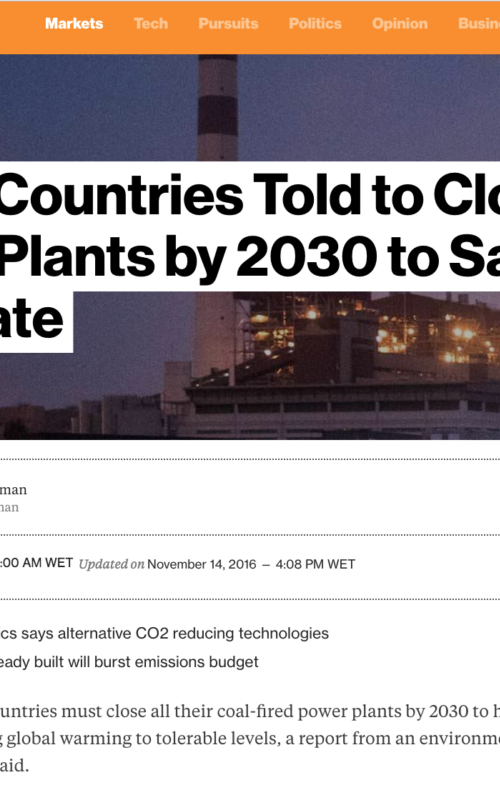
Bloomberg
Rich countries must close all their coal-fired power plants by 2030 to have a chance of holding global warming to tolerable levels, a report from an environmental research group said. China would have to phase out the most polluting fossil fuel by 2040 and the rest of the world by 2050, according to Climate Analytics, a Berlin-based non-profit that is studying how nations can meet the emissions goals they agreed at United Nations talks in Paris last year.
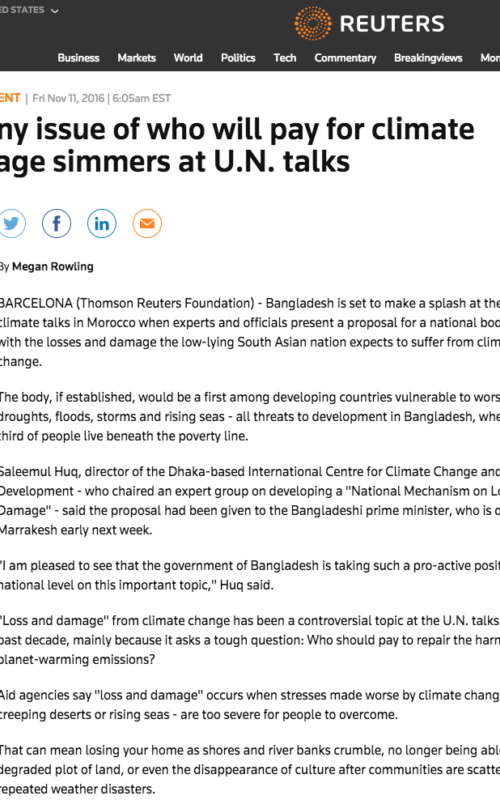
Reuters
The financing of measures to address loss and damage that remains the key sticking point at the Marrakech climate talks.
"Who should pay for it? The 'hot potato of responsibility' is being moved around," said Olivia Serdeczny, a research analyst with Climate Analytics and an advisor to vulnerable countries on loss and damage. "The sources of finance is an issue that remains untouched."
